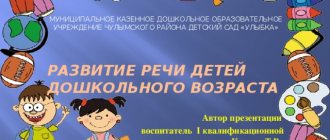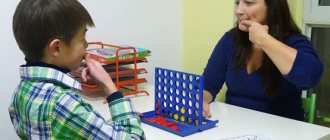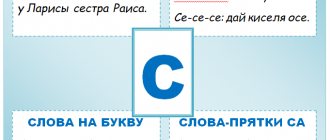Modern ideas and history of speech therapy rhythms
The article discusses modern problems of logorhythmic education in Russia. The basic concepts of logorhythmics, goals, objectives, means and content are presented. The history of the development of logorhythmics in Russia is revealed. The tasks of logorhythmic education of children with speech disorders are formulated: with general speech underdevelopment, with phonetic-phonemic speech underdevelopment and with stuttering.
Key words: movement, motor skill, motor skill, speech therapy rhythm, phonetic-phonemic disorders, general speech underdevelopment, stuttering.
Speech therapy rhythmics is a correctional method of training and education of persons with various developmental anomalies, including speech, means of movement, music and speech. Speech therapy rhythm, being an integral part of corrective rhythm, affects motor skills and speech.
The main goal of logorhythmics is to overcome speech disorders through the development and correction of the motor sphere. In accordance with the goal, the main tasks of logorhythmics are determined: correctional, educational and educational.
Corrective tasks include: overcoming the main speech disorder, developing breathing, voice, articulation, as well as developing and improving basic psychomotor qualities (static and dynamic coordination, switchability of movements, muscle tone, motor memory and voluntary attention) in all types of motor sphere (general , small, facial and articulatory).
Educational objectives include familiarization with a variety of movements, the formation of motor skills and abilities, the concept of spatial organization of the body, some musical terms in the formation of a sense of rhythm (musical meter, time signature, tempo, register).
Educational tasks include nurturing and developing a sense of the rhythm of a piece of music and one’s own rhythm of movements, developing the ability to move rhythmically to music and be critical of one’s movements and speech.
In logorhythmic classes, the development of psychomotor skills is carried out at an unconscious, involuntary level. The development of the motor sphere subsequently helps to organize speech. All skills acquired in logorhythmic classes are reinforced with speech material.
To understand the content of the concept of speech therapy rhythm, it is necessary to define what rhythm is in general and why it is needed.
In the process of life, the human body improves structurally and functionally, changes and adapts the environment. Movement is based on motor skill and motor skill.
Motor skill is the degree of mastery of an action technique, which is characterized by an increased concentration of attention on the components of movements and methods of solving a motor problem.
Motor skill is a high degree of mastery of an action technique in which movement control occurs automatically and is highly reliable.
Each movement is carried out in a certain rhythm. The concept of “rhythm” is used in different cases and is widespread: the rhythm of breathing, the heart, the rhythm of a poetic line, prose, the rhythm of the seasons, day and night, the rhythm of work. Rhythm is characterized by its main feature - it is the temporal or spatial order of objects, phenomena, and processes.
In the pedagogical aspect, rhythm is a system of physical exercises built on the connection of movements with music. In rhythmic classes, a sense of rhythm is developed - the ability to capture the alternation of strong and weak beats of a musical meter and reproduce a rhythmic pattern in motion: tapping a foot, shaking a head, waving a hand. Without bodily sensations of rhythm, musical rhythm, which has both a motor and emotional nature, cannot be perceived. Musical and rhythmic education is built on the basis of the development of a musical and rhythmic sense - the ability to actively experience and reflect in motion the time course of a musical work.
The method of developing rhythmic abilities was first substantiated by the Swiss teacher and musician Emile Jacques-Dalcroze in 1912. He proposed developing rhythm as an independent entity and then, on this basis, musical rhythm, poetic rhythm, rhythm of movements.
Speech therapy rhythm was first included in classes to overcome stuttering among preschoolers V.A. Gilyarovsky in 1932 and was highly praised by specialists.
In an article on speech therapy rhythms, V.A. Griner and Yu.A. Florenskaya in 1936 raised the question of developing special speech therapy rhythms for classes with stutterers in order to improve their speech. Practical material for classes with children who stutter was developed and presented in 1941 by N. S. Samoilenko in the article “Rhythmics with logoneurotics of preschool age.” She classified the exercises according to the degree of difficulty, taking into account the motor impairment of children who stutter, and determined the basic principles of conducting classes. V. A. Griner has developed practical material for preschoolers who stutter. She emphasized that the fundamental difference between speech therapy rhythm and the method of rhythmic education is that in the exercises special attention is paid to the word.
In the 40s, speech therapy rhythm in our country became a necessary part of the complex of influence on patients with aphasia. Logorhythmics in relation to patients with aphasia is applied primarily to disorders of the musical side of speech (speech prosody).
In the 50-70s. Work appeared on speech therapy rhythms in the system of eliminating stuttering in children. In 1958, the work of V. A. Griner “Speech therapy rhythms for preschoolers” was republished. In 1960, V.I. Rozhdestvenskaya, in her work “Speech Education in Preschoolers who Stutter,” emphasizes the role of exercises for combining words with movement. The rhythm of the movements produced helps normalize speech. The works of E. F. Shershneva and E. F. Rau note the importance of speech therapy rhythms in the correction of stuttering in preschool children.
Speech therapy rhythm in the 70-80s. still attracts the attention of researchers only in relation to people who stutter.
N.A. Tugova in 1968 develops a system of correctional and educational exercises for musical and rhythmic classes with stutterers in order to develop their voluntary attention and behavior.
V.I. Dresvyannikov in 1972, studying the characteristics of motor skills of stuttering schoolchildren in grades VI - VIII, reveals the relationship between the development of motor skills and expressive speech, between the degree of stuttering and the degree of motor impairment, and proposes a system of physical exercises to eliminate stuttering in schoolchildren aged 12-15 years. In 1976, G. A. Volkova presented a variety of logorhythmic material that can be used in various rehabilitation techniques, and in 1985, in the book “Speech Therapy Rhythmics”, training methods were given for various forms of speech disorders. [1].
The issue of logorhythmics in the system of correctional work to overcome stuttering in preschool children was developed by N. A. Rychkova in the 80s and proposed methods for examining motor skills in stuttering preschool children.
A. V. Krapukhin and A. A. Vysotskaya also deal with the problem of speech therapy rhythms for stutterers.
Speech therapy rhythms are widely represented in the works of E. V. Oganesyan in the correction of neurotic and neurosis-like stuttering in adults.
In a number of our works, we emphasized the importance of the theory of E. Jacques - Dalcroze, which formed the basis for the musical-rhythmic and logorhythmic education of children in our country. [2, 3]. In the preschool system of education and upbringing of children, the development of rhythmic abilities is carried out in music classes, and the development of motor qualities is carried out in physical education classes.
During music lessons, systematic, purposeful education of the musical abilities of each child is carried out. Classes include various types of activities: singing, listening to music, musical and rhythmic exercises, playing children's musical instruments. The main objectives of music classes are to develop interest in music and works of different genres; development of melodic and pitch hearing; improving skills in singing and moving to music.
Musical and rhythmic movements are closely related to the general movements that are developed by the teacher in physical education classes. The main objectives of the classes are to develop the basic qualities of general motor skills - muscle tone, coordination of movements, switchability, motor memory. The ability to control one’s body is developed through walking, running, jumping, changing lanes, and sports games.
Tasks for the development of physical skills and rhythmic abilities in children are solved throughout the entire preschool age - from 3 to 7 years, preparing them for increasing loads at school. Music classes and physical education classes develop children's psychomotor skills, which has a beneficial effect on their education in primary school.
Children with speech impairments, unlike children with normal speech development, have significant deviations in speech and psychomotor development.
In the group for children with phonetic-phonemic speech underdevelopment, children with dyslalia and erased dysarthria are taught. Children with dyslalia do not have serious gross motor impairments. Fine and articulatory motor skills and auditory-verbal rhythm are insufficiently developed. In children with erased dysarthria, general motor skills are not sufficiently formed: muscle tone is increased, static and dynamic coordination of movements, switchability of movements, tempo and rhythm are impaired. These features are characteristic of the entire motor sphere - general motor skills, facial, fine and articulatory.
In children with general speech underdevelopment, motor impairments are characterized by its underdevelopment, general motor clumsiness, and disturbances in optical-spatial gnosis. The basic motor skills of children with ODD are not sufficiently formed, movements are not rhythmically organized, motor exhaustion is increased, motor memory and attention are reduced.
In children with stuttering, the tempo-rhythmic organization of movements is disrupted, and coordination of movements suffers to a greater extent.
Physical education and music classes do not solve the main correctional tasks for the development of psychomotor skills of children with speech disorders. The most effective means of developing the mental and motor sphere of children with speech disorders is speech therapy rhythm classes.
Treatment through movement involves the use of various types of movements in kinesitherapy. With the help of a system of physical exercises accompanied by music, a sense of rhythm is developed for correctional and therapeutic purposes.
Speech therapy rhythmics is part of therapeutic rhythmics and is based on the use of the connection between words, music and movement. G.A. Volkova defines speech therapy rhythm as one of the forms of active therapy that can be included in “any rehabilitation method of education, treatment and training of people with various developmental anomalies, especially in relation to people with speech pathology.”
LIST OF SOURCES USED
1. Volkova G.A. Speech therapy rhythmics - M., Education, 1985.
2. Shashkina G.R. Speech therapy rhythm for children with FFN. - M., 1996, 16 p., abstract of dissertation. Ph.D. ped. Sci.
3. Shashkina G.R. Speech therapy rhythm for preschoolers. Methodological recommendations - M., 2001.
About the author
Shashkina Gulnara Rustemovna
Candidate of Pedagogical Sciences, Associate Professor.
Associate Professor of the Department of Speech Therapy at Moscow City Pedagogical University (MSPU) and Head. Department of Special Defectological Education of the Moscow Social and Humanitarian Institute (NOCHU VPO MSGI).
111673, Moscow, st. Novokosinskaya, 15, building 4, apt. 38.
Telephone
Diagnosis of young children
A speech therapist is most often consulted when a child turns 3 years old. But the earlier correctional work is started, the more effective it will be. A speech therapy examination carried out with young children will allow you to see a complete picture of speech development. Parents should pay attention to the state of the motor sphere:
- can the baby stand on one leg;
- on the quality of jumping and running in place;
- how a child holds a pencil and makes appliqués;
- can he repeat the rhythmic pattern?
If the baby is awkward, tries to avoid tasks that require subtle differentiated movements with his fingers (cutting, appliqué), and cannot repeat the rhythm, this may be a sign of a speech disorder. If by the age of one and a half years he does not speak and uses mainly facial expressions and gestures, it is worth contacting a specialist.
Modern technologies of speech therapy for young children make it possible to correct speech disorders as much as possible. The work is based on the formation of the correct pronunciation of vowels, labial-labial, labial-dental, back-lingual and front-lingual sounds. All exercises should be supplemented with finger exercises. All this will have a beneficial effect on the state of the motor sphere and the development of children's speech.
What is logorhythmics
It is an integral part of kinesitherapy. During logorhythmic classes, specially selected exercises are combined with the pronunciation of certain speech material.
The nature of speech disorders determines what the main task of speech therapy rhythm is. With the help of her methods, a comprehensive correction of both speech and other disorders associated with them occurs based on the complex use of rhythmic movements, words and music.
Logorhythmic exercises
Important! As a result of regular classes, it is planned not only to correct speech functions, but also to develop the physical and mental qualities of children and adapt to environmental conditions. In children, on this basis, there is a restructuring of the motor, sensory, speech-motor, and cardiovascular systems, and the development of emotional and volitional personality traits.
Even children who do not speak at an early age get a chance to fully develop.
Efficiency and effectiveness of this method
As a result of logorhythmic exercises, the following tasks are solved:
- Children gain the ability to articulate sounds more accurately.
- They improve their phonemic awareness.
- As a result of the development of the speech sphere, the vocabulary increases.
- When conducting logorhythmic exercises, auditory attention improves and motor memory strengthens.
- Under the guidance of a speech therapist, general and fine motor skills develop, which is closely related to the improvement of the child’s thinking.
- The baby learns to perform clear coordinated movements in accordance with the spoken speech.
- Improving the melodic-intonation characteristics of speech.
- Development of children's creative imagination.
Exercises for speech development in children 2-3 years old
With regular exercise, the effect will be greatest.




